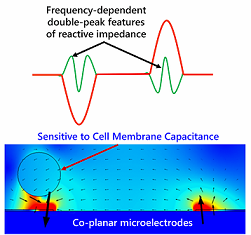 |
Double-peak signal features in microfluidic impedance flow cytometry enable sensitive measurement of cell membrane capacitance In a microfluidic impedance cytometer with co-planar microelectrodes, unusual “double peak” features were observed in the reactive component of the electrical signatures from individual red blood cells. This phenomenon was observed only at specific frequencies (400 - 800 kHz) and its occurrence was facilitated by the microelectrode geometry. |
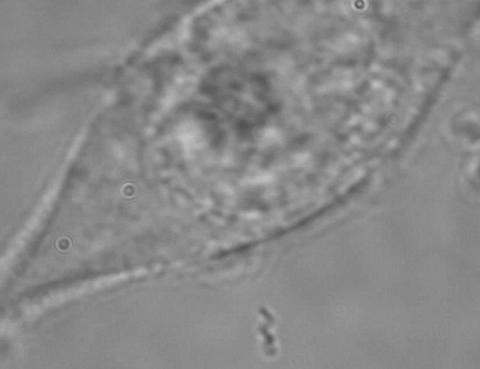 |
NANOMOTORS PROBING TUMOR MICROENVIRONMENT In this work the team of researchers steered helical nanomotors remotely, via an external magnetic field, through a tumour model to sense, map and quantify changes in the cellular environment. The model comprises both healthy and cancer cells embedded within a reconstituted basement membrane matrix and mimics the breast cancer environment. |
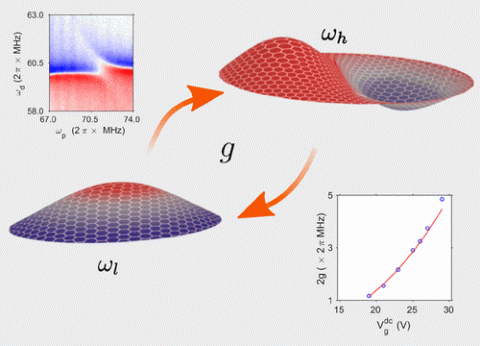 |
GATE TUNABLE COOPERATIVITY BETWEEN VIBRATIONAL MODES Coupling between a mechanical resonator and optical cavities, microwave resonators, or other mechanical resonators have been used to observe interesting effects from sideband cooling to coherent manipulation of phonons. Here we demonstrate strong coupling between different vibrational modes of MoS2 drum resonators at room temperature. We observe intermodal as well as intramodal coupling. |
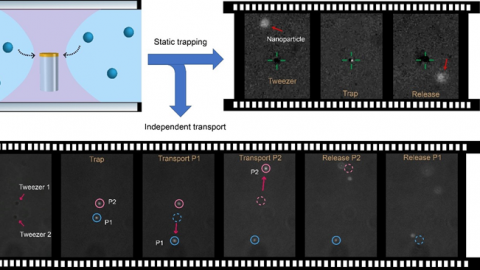 |
A NEW ‘‘TWEEZER IN A TWEEZER” TECHNOLOGY Manipulation of colloidal objects with light is important in diverse fields. While performance of traditional optical tweezers is restricted by the diffraction-limit, recent approaches based on plasmonic tweezers allow higher trapping efficiency at lower optical powers but suffer from the disadvantage that plasmonic nanostructures are fixed in space, which limits the speed and versatility of the trapping process. |
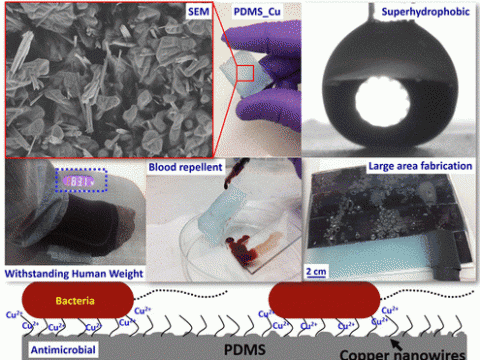 |
ANTI-MICROBIAL SURFACES Antimicrobial-resistant infections currently claim 700,000 lives each year from across the world and this figure will increase alarmingly to 10 million by 2050 if it is not stopped. One of the methods to tackle biofilms involves prevention of biofilm formation by actively killing the bacteria as soon as they arrive on the surface. |
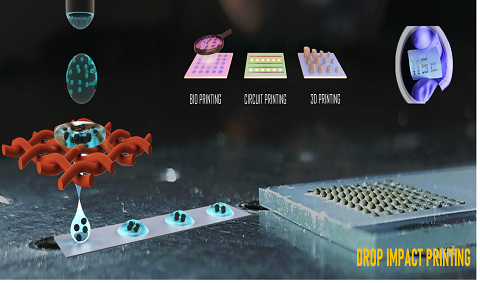 |
DROP IMPACT PRINTING Pursuit to accurately print microscale droplets is not new. However, with the advent of additive manufacturing and 3D bio-printing, research interest in this technology has been renewed. Newer applications demand use of inks which are not well suited for conventional printers. For example, bio-printing requires dispensing live cells. Viability of cells is dramatically reduced by the thermal or piezoelectric actuation used in conventional printers. |
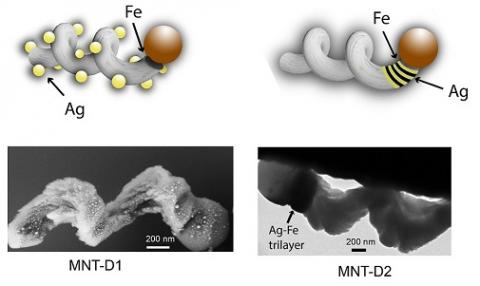 |
NANOROBOTS AS MOBILE NANOTWEEZERS Controlled manipulation of nanoscale objects in fluidic media is one of the defining goals of modern nanotechnology. So far, plasmonic tweezers – nanosized tweezers made up of noble metals -- are used to trap such small sized cargo. |
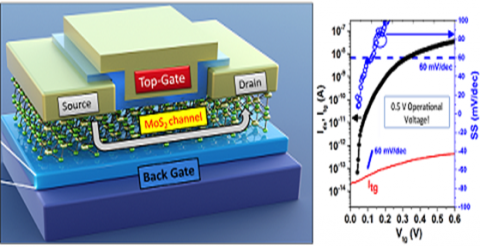 |
BREAKING THE BOLTZMANN LIMIT FOR LOW POWER NANO-TRANSISTOR Power consumption in modern electronic devices is a major technological and environmental concern. This is because although technologists are able to reduce the dimensions of the transistor, they are unable to reduce the voltage required for its operation (called supply voltage). |
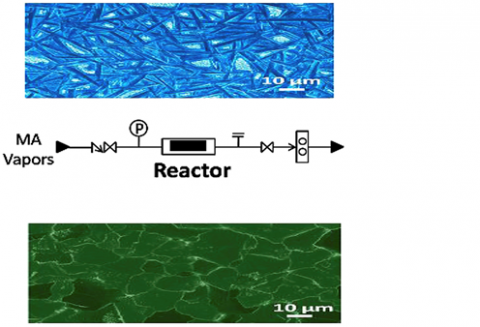 |
Development of a novel vapor-annealing process to consistently and reliably get high-performance perovskite solar cells Spin coated perovskite thin films are known to poor device-to-device repeatability, mostly due to poor control on morphology of the deposited films. In this work, a post-deposition vapor annealing process was developed, which “fixes” the issues with as-deposited films, leading to high-efficiency perovskite solar cells with excellent repeatability (standard deviation of only 0.7%). |
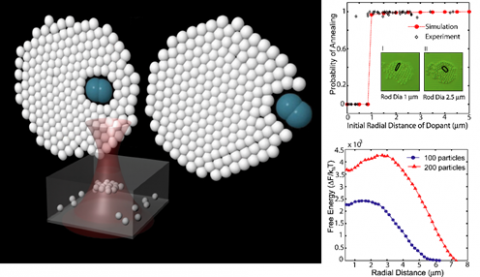 |
Fate of an Intruder in Colloidal Nanocrystals is Governed by Entropy Using a modified and highly configurable optical trap we have observed formation of 2D colloidal crystallites whose phase and sizes can be controlled. This system allows us to study the dynamics of foreign dopants injected into the crystallites. The striking result obtained here was the ability of finite-sized colloidal clusters to expel or internalize a foreign dopant depending on its initial position. |